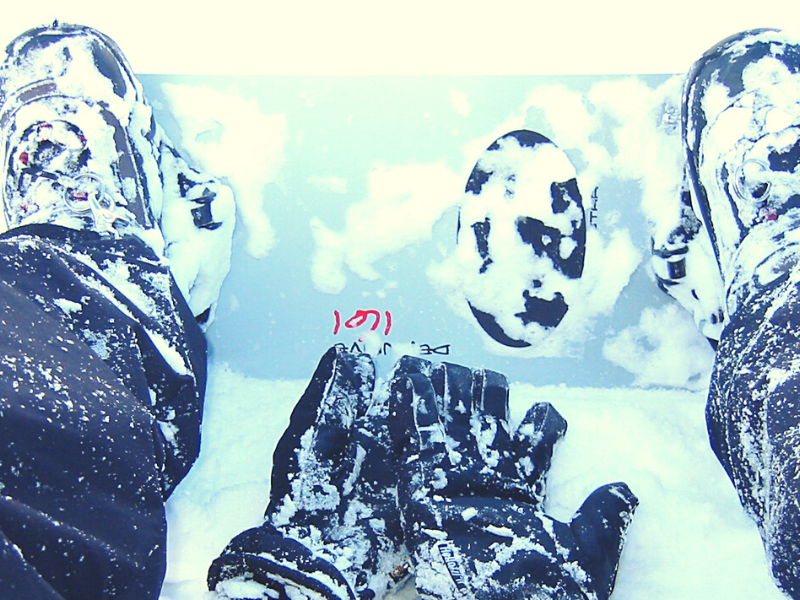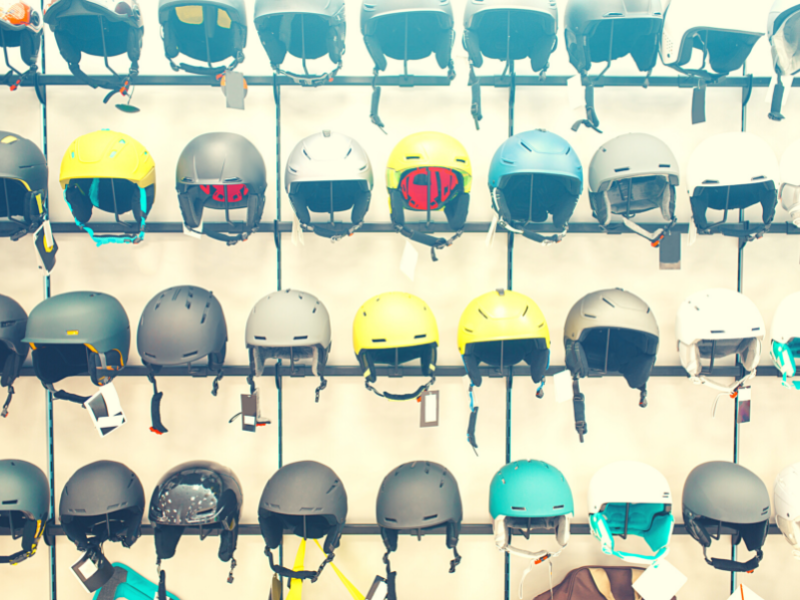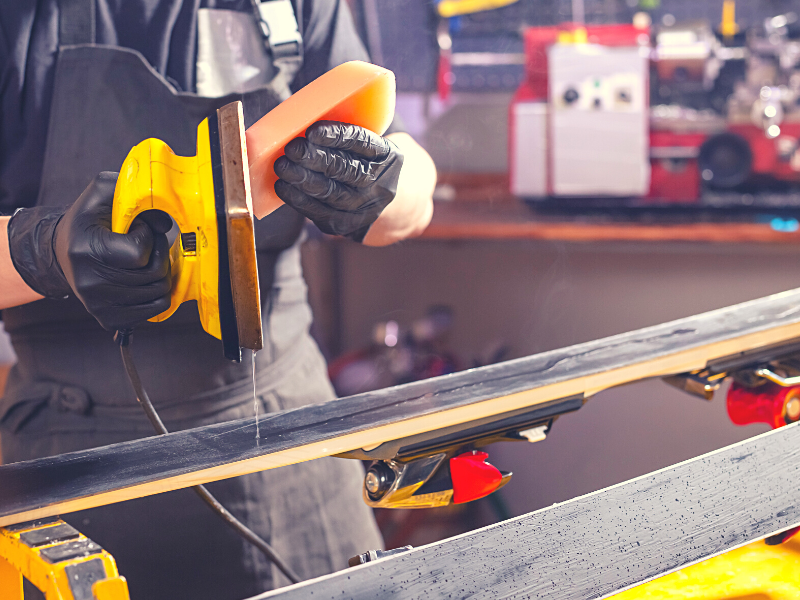New snowboarders are often overwhelmed by the different pieces of equipment and knowledge they need to step on the slopes. It's not unusual to have questions about layering, styling, or gear specs - but perhaps the most important question is how do you know if your snowboard boots are too tight?
A few key signs that your snowboard boots are too tight include experiencing pain, the inability to lace your boots correctly, or if you can feel any pressure points on your feet. The latter includes the top of your foot or toes touching the surface of your boots.
When you first put your snowboard boots on, especially new boots, they should be snug, but not painful. Finding a balance between comfort and fit can be challenging, so let's demystify the fit of snowboard boots together and look at how you can evaluate a pair at the store.
How Should Snowboard Boots Fit?
Snowboard boots should fit snugly, securing your foot on all sides without much room for movement. A properly fitting boot will move in unison with your foot, preventing any sort of slipping or sliding. It will also be relatively easy to slip your foot into and lace up.
If your boots are too big, they'll be difficult to control while riding and your feet will slide around inside, which can cause blisters. If they're too small, they'll be uncomfortable and you won't be able to get them on or off without difficulty.
Don’t panic if your boots feel a bit tight when you first put them on - this is that fine line between snug and tight, and if it feels more snug than uncomfortable then you're set.
This can be a good thing for new boots because over time and with use, your shoes will “break in” and fit perfectly. If your shoes fit “just right” the first time you put them on, this usually means they'll be too loose after a few trips down the snow.
So how do you find that fine line between loose, tight, and just right?
Signs Your Snowboard Boots Are Too Tight
- Pain, Cramps, or Aching: You feel localized discomfort anywhere throughout your feet - toes, arch, heel, etc.
- Circulation Loss: This often happens due to loose boots, where a rider overcompensates by making the upper zone of lacing too tight, restricting blood flow and making the foot go numb.
- Difficulty Lacing: Whether you lace, BOA, or a hybrid, if you're having trouble getting the laces tight enough or keeping them tied.
Many people go into boot shopping knowing they're supposed to feel snug and end up overdoing it. Again, snowboard boots should never cause pain or loss of circulation when you wear them. For a snug fit, remember that if your boots are new in the box, they'll only marginally stretch and conform from wear.
If your boots are painful right off the bat, to the point you don't want to wear them for an hour straight, they ultimately won't flex and stretch enough to fit properly.
Signs Your Snowboard Boots Are Too Loose
- Heel Lift: If you can push your heel back and forth or up and down while the rest of your foot remains stationary in the boot, this is a sign they're too loose. You can feel this easily when walking.
- Little Toe Room: Your toes should be just slightly pressed up against the tip of the boot. If you cannot feel the front of your boot, there is too much room and you should go down a size.
- Blisters: If you're getting these in the same places each time you ride, it's likely due to a poor fit that's allowing your foot to slide around inside the boot - also a byproduct of heel lift and toe room.
Your snowboard boots should leave little to no room for movement inside the shoe. Heel lift is one of the most common issues with incorrectly fitting snowboard boots. It can lead to poor performance, blisters, and potential injuries from your foot sliding around in your shoe.
To stop your heel from lifting, make sure your boots are laced snugly (that's the word of the day.) If that doesn’t fix the problem, your shoes are likely too big.
Continuing to make your boots tighter and tighter, to the point of pain or nerve issues, is an ineffective solution. Making sure you have the right fit the first time around can save you a lot of trouble and discomfort.
Signs Your Snowboard Boots Fit Just Right
- Heel and Ankle Hold: There's little to no heel lift when you move your foot around inside the boot.
- Toe Room: You can wiggle your toes but they're not free to move around inside the boot.
- Lacing: Your laces/BOA should be tight enough that you can get into and out of your bindings without having to readjust them, but not so tight that they're cutting off circulation.
- Comfortable: You can wear them for extended periods without discomfort.
If your boots fit snugly and securely, with little to no heel lift, just enough toe room, and are comfortable to wear, you've found a good fit. When your boots fit just right, it makes a world of difference both for your comfort and your performance.
Your heel shouldn't lift from the boot itself when walking or jumping, but if there's a small (very small) amount of lift, don’t panic. Many times, strapping in will alleviate that problem. However, if you're experiencing lift while riding, your shoes are too large.
If you're about to purchase a new pair of boots, or you're having trouble with the fit of your current pair, make sure to keep these guidelines in mind. Additionally, we've built a 4-part buyer's guide to finding the perfect fitting snowboard boots.
Before You Buy: 4 Steps For Finding Snowboard Boots That Fit
Although it might be tempting to focus on the flashiest part of your snowboarding gear, like your board or jacket, never overlook the importance of a good pair of boots. And, like any important purchase, being well-informed going into the process pays in dividends.
The boots can make or break your entire experience, and the last thing you should do is make a blind purchase! So here are four important things to keep in mind before you start shopping:
1. Know Your Own Feet
Everyone’s feet are shaped differently, and this goes beyond shoe size. Do some research and figure out if you have wide or skinny feet, if you have high or low arches, and even if your heel is larger or smaller than average.
There are some excellent services out there that help you figure out the shape of your feet for boots - and it's not as cumbersome as you might imagine. Technology has come a long way since Dr. Scholl's popup stands in your local pharmacy.
Most snowboard boots straight off the shelf are going to be made for the most common shapes of feet, and it’s crucial for your fit that you be aware of any unique aspects of your foot that you should be keeping in mind.
2. Figure Out Your ACTUAL Shoe Size
Did you know that three out of five people are wearing the wrong shoe size? And believe it or not, much of this is intentional, as men tend to overstate their shoe size by an average of 0.7 sizes, and women understate their shoe size by an average of 0.1 sizes.
As you can see, the world has a problem with getting their shoe size correct, and this extends into the snowboard boot as well.
Strangely enough, societal and psychological motivations are driving this issue
All of that being said, no matter your gender, make sure you have a truly accurate idea of your actual shoe size. Here's a guide to get you started.
3. Buy Snowboard Socks!
You can’t wear just any old socks with snowboard boots. Just ask that guy whose heels are always bleeding or whose toes are frozen off!
Get yourself a proper pair of snowboard socks - Darn Tough makes incredible over-the-calf socks - available in midweight and lightweight.
Whenever you do try-ons of your potential boots, wear these socks during the process. Even the lightweight sock is thicker than your conventional sock and will influence how tight or how loose your boots are going to feel.
4. Heel Test
So you've found a pair of snowboard boots you like, you can sort of wiggle your toes, and they feel snug but not uncomfortable. You've taken all the other steps in this article into account and they pass the test. There's one thing left to do.
Lean your knee forward, but keep your foot flat and planted.
Your heel will shift forward just a bit. You should be able to take your two fingers and jam them down between your heel and the shell of your boot. If you can, then your boot has passed the final fit test.
There's some debate around how much space to leave, but there's some consensus that more advanced riders can get away with one finger, and more beginner riders require two.
Choose The Right Fit Over Loose Or Tight Fit
When it comes to choosing the right snowboard boots, it's important to find a good fit. This means finding a pair of boots that are neither too tight nor too loose. You now know the signs of when a boot fit is too tight, too loose, or just right.
Not only that, but you have 4 concrete action items to take the next time you're boot shopping - they'll make sure you walk out with the best-fitting snowboard boot.
So, whether you're just starting or you've been riding for years, use these tips to get the perfect fit for your next set of snowboard boots!
Oh and just below, you'll find some of the most common questions about getting a perfect fit with snowboard boots.
Common Questions About Snowboard Boot Fit
You've learned the signs of a good fit, but what if you're still unsure? These may be questions you've already had or some that you're yet to ask. Regardless, they're a pool of questions that get asked frequently about snowboard boot fit, and the answers you may find valuable.
Q: Should you be able to wiggle your toes in snowboard boots?
A: You should be able to wiggle your toes ever so slightly. If you can't, the boot is too tight. If you can wiggle them excessively, the boot is too loose. This also applies to curling your toes.
Q: Should your toes touch the end of snowboard boots?
A: Your toes should barely touch the end of your snowboard boots when standing. If they're smushed up against the front, the boot is too small.
Q: Is it better for snowboard boots to be tight or loose?
A: For the most part, snowboard boots should be on the tighter side. Loose-fitting boots can cause several problems, the least of which is blisters.
Q: I’ve had my boots for a while and they’re starting to feel loose. What can I do?
A: If your boots are starting to feel loose after extended wear, it might be time for a new pair. However, you can try to adjust the lacing and flex of your boots to see if that helps before giving up on them altogether.
Q: Why is my boot's fit different from left to right?
A: This is not uncommon. Usually, one foot is larger than the other, and that's going to lead to a different fit. If the difference is dramatic, you may want to look at a custom orthotic solution.
Q: What if I have wide feet?
A: Look for a boot with a wider forefoot or a longer toe box. Alternatively, you can try an aftermarket insole designed for those with wider feet.
Q: What if I have narrow feet?
A: You might want to try a boot with a narrower last. Alternatively, you can try an aftermarket insole designed for those with narrower feet.
Q: Can I make my boots tighter/looser without adjusting the laces?
A: Yes. The boot's liner usually has a lacing system that you can use to make the boots tighter or looser.



